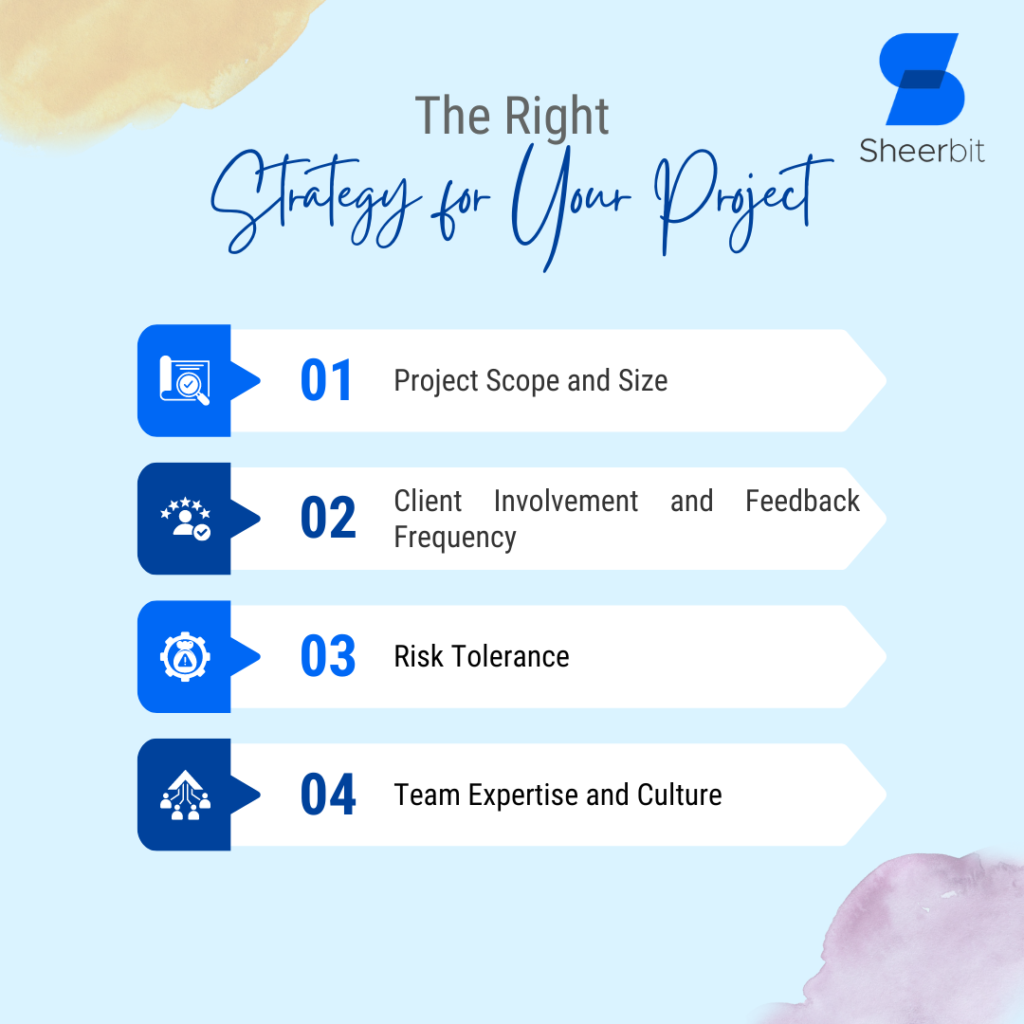Choosing the appropriate approach is like charting a voyage across unknown seas in the fast-paced world of software development Strategy. Developers must negotiate a sea of options as technology advances rapidly to produce scalable, maintainable, and efficient solutions. We’ll go into software development strategies in this post, examining the numerous methods and offering advice on choosing the best ones for your projects.
Understanding Software Development Strategy
1. Agile Methodology: The Iterative Approach
Agile, a word that connotes adaptation and flexibility, is now essential to contemporary software development. With their focus on customer input, cooperation, and iterative progress, Agile techniques such as Scrum and Kanban have become widely used.
Pros:
Flexibility: Changes and tweaks are possible even at the agile development phase’s end.
Customer Satisfaction: Feedback regularly guarantees that the final product meets consumer expectations.
Quick Deliverables: After each sprint, there are concrete, workable deliverables due to frequent revisions.
Cons:
Documentation Challenges: In agile development, working software is often prioritized above extensive documentation.
Scope Creep: If Agile’s flexibility is not effectively managed, it can occasionally result in scope creep.
2. Waterfall Model: The Sequential Approach
Unlike the agile model, the waterfall model is sequential and follows a straight line. This method is more structured but may be less adaptable because each step must be completed before moving on to the next.
Pros:
Clear Milestones: Progress can be easily tracked with clearly defined phases.
Comprehensive Documentation: Detailed documentation is usually included at every stage.
Predictable Timelines: Timelines are more predictable due to their sequential structure.
Cons:
Limited Flexibility: Changes are difficult to implement and take time to finish.
Late Feedback: Getting client input late in the process increases the chance that it won’t match expectations.
3. DevOps: Bridging the Gap Between Development and Operations
DevOps aims to dismantle the conventional divisions between the development and operations departments by promoting a culture of cooperation and continuous delivery.
Pros:
Rapid Deployment: Software releases are faster and more dependable when automation and teamwork are implemented.
Enhanced Communication: Open communication between the development and operations teams is encouraged by DevOps.
Continuous Improvement: Frequent feedback loops make it easier for processes related to development and operations to continuously improve.
Cons:
Learning Curve: Teams unfamiliar with the technique may need to go through a learning curve while implementing DevOps principles.
Infrastructure Complexity: Infrastructure management may become more complicated due to automated deployment.

Choosing the Right Strategy for Your Project
1. Project Scope and Size
When choosing a development approach, consider your project’s size and scope. Large-scale, well-defined projects could benefit more from waterfall development, whereas smaller, more dynamic projects are usually better off with agile development.
2. Client Involvement and Feedback Frequency
Agile approaches are a perfect match if regular feedback and client interaction are essential to the project’s success. However, the Waterfall methodology could be more suited if the project requirements are steady and customer engagement is low.
3. Risk Tolerance
Evaluate the stakeholders’ and your team’s risk tolerance. Agile is adaptable and flexible, which makes it appropriate for projects whose needs change over time. Should stakeholders desire a systematic and consistent approach, the Waterfall model may be more appropriate.
4. Team Expertise and Culture
Take your development team’s experience and culture into account. A transformation in culture, as well as proficiency with automation and teamwork technologies, are necessary for DevOps. Assess your team’s skill set and decide whether this shift is something they can handle or whether a more traditional approach would work better.
The Ever-Evolving Landscape
Keeping up with new trends and technology is crucial as the software development industry develops. The use of hybrid techniques, which combine the advantages of several tactics, is growing in popularity.
For example, some teams use DevOps techniques for continuous integration and delivery while adopting an Agile methodology for development. This hybrid method guarantees effective and automated deployment procedures while permitting flexibility during development.
Conclusion
There are only a few universally applicable strategies for software development among the wide ocean of options. The secret is to thoroughly assess each project’s particular needs and make an educated choice based on project size, client engagement, risk tolerance, and team skills.
Recall that the most effective technique is a customized approach that fits your project’s unique requirements and objectives rather than a strict template. Your ability to traverse the code with purpose and accuracy will determine how well your software development Strategy project turns out, regardless of your Agile, Waterfall, DevOps, or hybrid style.
Take a Confident Step Into Your Software Development Journey! Selecting the appropriate approach for software development is a crucial choice that can influence the outcome of your projects. If you’re willing to enhance your development process, our knowledgeable staff is available to assist you. Contact us right now for a consultation, and let’s work together to create amazing software. It all begins with the plan that works for you!





